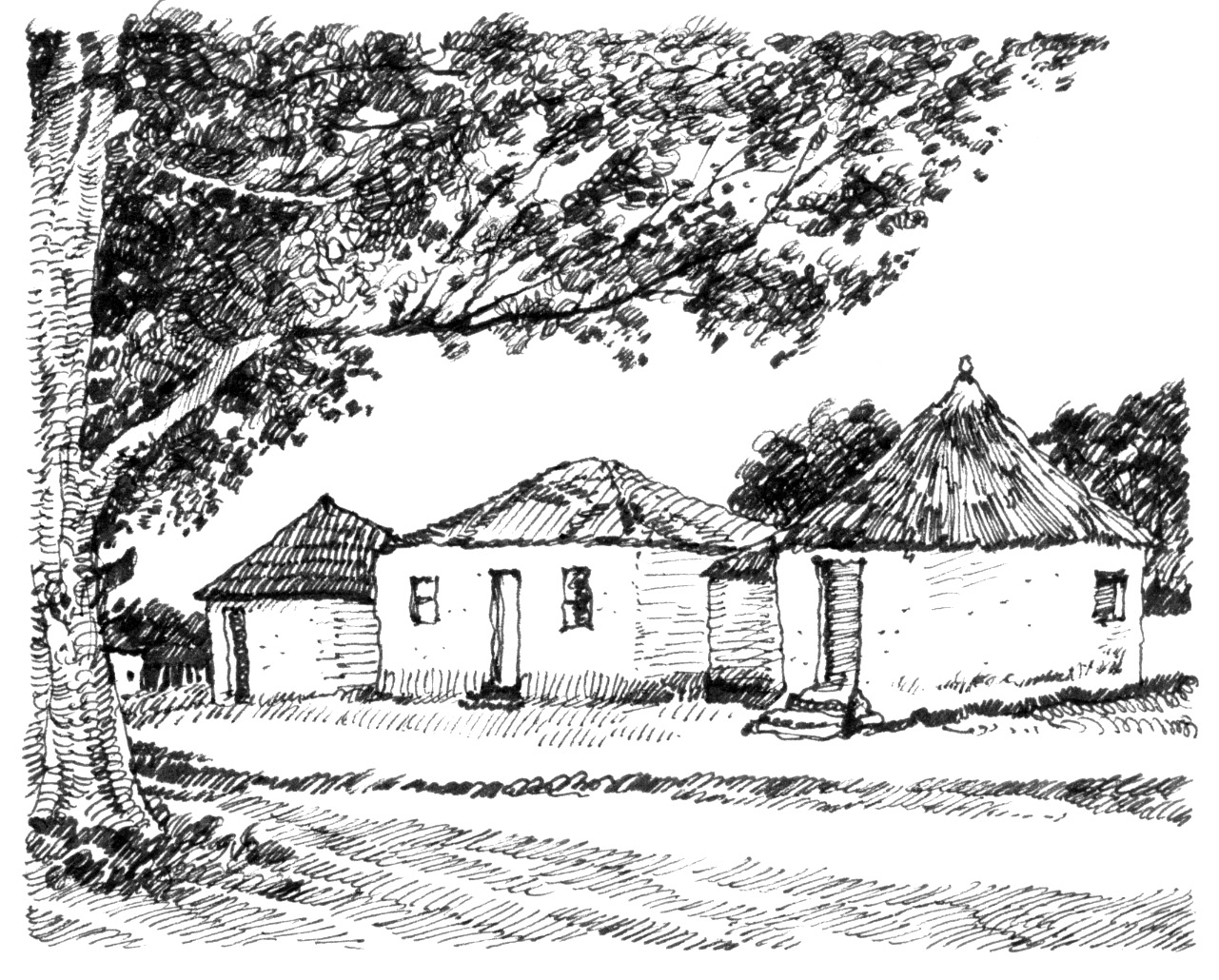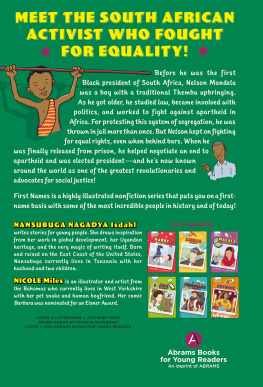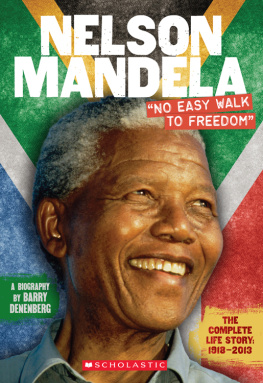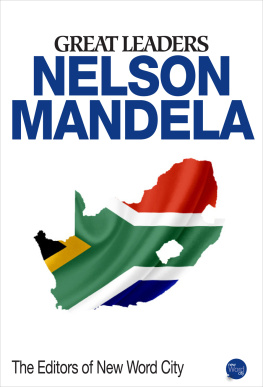Belviso - Who Was Nelson Mandela?
Here you can read online Belviso - Who Was Nelson Mandela? full text of the book (entire story) in english for free. Download pdf and epub, get meaning, cover and reviews about this ebook. year: 2014, publisher: Penguin Group US, genre: Politics. Description of the work, (preface) as well as reviews are available. Best literature library LitArk.com created for fans of good reading and offers a wide selection of genres:
Romance novel
Science fiction
Adventure
Detective
Science
History
Home and family
Prose
Art
Politics
Computer
Non-fiction
Religion
Business
Children
Humor
Choose a favorite category and find really read worthwhile books. Enjoy immersion in the world of imagination, feel the emotions of the characters or learn something new for yourself, make an fascinating discovery.
Who Was Nelson Mandela?: summary, description and annotation
We offer to read an annotation, description, summary or preface (depends on what the author of the book "Who Was Nelson Mandela?" wrote himself). If you haven't found the necessary information about the book — write in the comments, we will try to find it.
Who Was Nelson Mandela? — read online for free the complete book (whole text) full work
Below is the text of the book, divided by pages. System saving the place of the last page read, allows you to conveniently read the book "Who Was Nelson Mandela?" online for free, without having to search again every time where you left off. Put a bookmark, and you can go to the page where you finished reading at any time.
Font size:
Interval:
Bookmark:

Who Was Nelson Mandela?

By Pam Pollack and Meg Belviso
Illustrated by Stephen Marchesi
Grosset & Dunlap
An Imprint of Penguin Group (USA) LLC
For Joanne Barkan, who stayed up in New York City to see Madiba walk out of jailPP
To Joan S. Belviso, Umama and MakhuluMB
For Doug Jetta, Ricardo Gittings, and Medrano McPherson, who taught me by exampleSM
GROSSET & DUNLAP
Published by the Penguin Group
Penguin Group (USA) LLC, 375 Hudson Street, New York, New York 10014, USA

USA | Canada | UK | Ireland | Australia | New Zealand | India | South Africa | China
penguin.com A Penguin Random House Company
If you purchased this book without a cover, you should be aware that this book is stolen property. It was reported as unsold and destroyed to the publisher, and neither the author nor the publisher has received any payment for this stripped book.
Penguin supports copyright. Copyright fuels creativity, encourages diverse voices, promotes free speech, and creates a vibrant culture. Thank you for buying an authorized edition of this book and for complying with copyright laws by not reproducing, scanning, or distributing any part of it in any form without permission. You are supporting writers and allowing Penguin to continue to publish books for every reader.
The publisher does not have any control over and does not assume any responsibility for author or third-party websites or their content.
Text copyright 2014 by Pam Pollack and Meg Belviso. Illustrations copyright 2014 by Stephen Marchesi. Cover illustration copyright 2014 by Nancy Harrison. All rights reserved. Published by Grosset & Dunlap, a division of Penguin Young Readers Group, 345 Hudson Street, New York, New York 10014. GROSSET & DUNLAP is a trademark of Penguin Group (USA) LLC.
Library of Congress Control Number: 2013032706
ISBN 978-0-698-15975-4
Version_1
In the heart of Thembuland, in South Africa, was a grand house. The local people called it the Great Place. Here lived Jongintaba, who ruled as king. The Great Place was his royal home.

On this day in 1927, Jongintaba was holding a tribal meeting. The men talked about important matters. Also in the room was a young boy who had come to live at the Great Place only a short time before. He was nine years old. After the boys own father died, the king had adopted him.
The boy listened to the men talk and watched his foster father. The king did not speak. He listened. He thought everyone deserved a voice in his kingdom, no matter who they were. Then, when he sensed that people had said all they needed to, the king gave his opinion. This approach was very different from the way the rest of the country of South Africa was ruled.

South Africa is a country at the bottom tip of the African continent. It is almost twice the size of Texas. Once black kings had ruled South Africa. Then white settlers came from Europe. They grabbed land for themselves and took control of the country. By the late 1800s, black South Africans had no voice in the government. By the time the boy came to live with his new foster father, there were about six million people in South Africaand about four million were black. And yet they werent truly citizens of their own country. They couldnt vote. They could only live where the government allowed them to live. Even kings like Jongintaba had no real power.
As the nine-year-old watched his foster fathers meeting, he dreamed of a different South Africa, one where people of all colors had a voice. Where everyone was free and equal. When he grew up he hoped to make that happen.
The boys name was Nelson Mandela. One day he would change South Africa. One day he would change the world.

Troublemaker

The boys name had been Rolihlahla (Roh-lee-LAH-lah). In his native language, the word meant tree shaker. But it also meant troublemaker. The boys father was chief of the people called the Thembu tribe. Like many chiefs, he had more than one wife, and he also had thirteen children. The boys mother, Nosekeni Fanny, was her husbands third wife. Rolihlahla was the first of his mothers four children. He was born on July 18, 1918.

At the time, South Africa was ruled by the British. The white government strictly controlled what black South Africans did and where they went. Black people had to stay in their own neighborhoods and villages, which were called homelands. If a black person left his homeland for any reason, he had to carry a special pass that gave him permission to travel, even if he was only going to a white neighborhood to work for the day. A black person without a good reason for being in a white neighborhood would be arrested.

When Rolihlahlas father ignored a summons from the British government to appear in court, he was stripped of his title and most of his land and cattle. The boy and his mother went to live in the village where shed been born. The boy went to a school run by Christian missionaries from Europe. For his first day of school his father had given him a pair of his own trousers cut off at the knee to replace the blanket dyed in red clay he wore at home. When the boy got to school his teacher gave him something else: a Western name. From that day on, Rolihlahla would be called Nelson. Nelson Mandela.

Nelson shared three small huts with his mother and younger sisters. He brought sheep and calves to and from the pasture. His favorite game was stick fightinga traditional South African sport that is a bit like sword fighting. Players hold two sticks, one in each hand. They try to strike while blocking at the same time. Nelson was a champion in his village.
It was always a special time when his father visited the family. However, during one of his visits home, Nelsons father became sick and died. Not only was his father gone, but Nelson would no longer live in the village with his sisters and mother. He was going to have a new foster father: Jongintaba.

Font size:
Interval:
Bookmark:
Similar books «Who Was Nelson Mandela?»
Look at similar books to Who Was Nelson Mandela?. We have selected literature similar in name and meaning in the hope of providing readers with more options to find new, interesting, not yet read works.
Discussion, reviews of the book Who Was Nelson Mandela? and just readers' own opinions. Leave your comments, write what you think about the work, its meaning or the main characters. Specify what exactly you liked and what you didn't like, and why you think so.











